SCUA supports student success by providing opportunities for internships, capstone projects, practicums, student workers, and volunteers. Their projects include conducting research and archival processing, creating libguides and story maps, creating exhibits, and writing blog posts. Some of the experiences in SCUA lead to external internships and job opportunities in the field.
Summer Internship: Country Music Hall of Fame
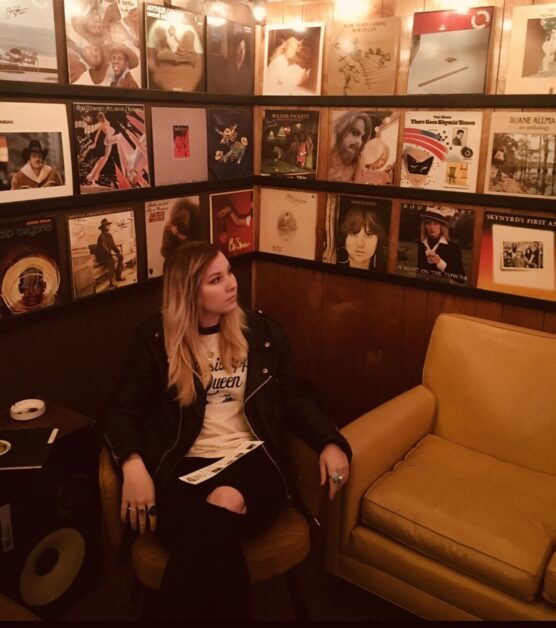
This summer, Tori Hinshaw is working as the graduate intern for the Collections Department at the Country Music Hall of Fame and Museum in Nashville, TN. As the collections intern, she is working hands-on with clothing, stage costumes, manuscripts, photographs, and recorded sound. From accessions, to exhibit de-installations, to research for upcoming exhibits, her time at the CMHOF will be an extremely valuable learning experience.
Capstone Project: North Carolina Cookbooks
by Adrienne Johnson
Community cookbooks originated as a means to raise money for civic causes. If the roof of a church needed replacing, for example, the ladies of the congregation collaborated to gather their favorite recipes into one book, which would be sold for the proceeds necessary for therepairs. Women sold cookbooks to support churches, schools, and other community organizations, while also sharing their own heritage and traditions. But these cookbooks served other purposes as well. While researching, I learned that as community cookbooks gained popularity, progressive women such as suffragettes sometimes hid propaganda within the pages of these books, knowing that here, their messages would be safe from the eyes of men. The legacy of these enterprising women could not have found a better home than the Special Collections and University Archives (SCUA) at the University of North Carolina at Greensboro, a school originally founded for women.
With my Capstone Experience at an end, I am putting down the proverbial pencil to the Research Guide I created, that features SCUA’s collection of North Carolina community cookbooks. I would happily keep working with these books for years to come, researching North Carolina foodways, evolving kitchen technologies, changes in artwork, nutritional trends, wartime effects on food availability, and most importantly the women’s history recorded in these pages.
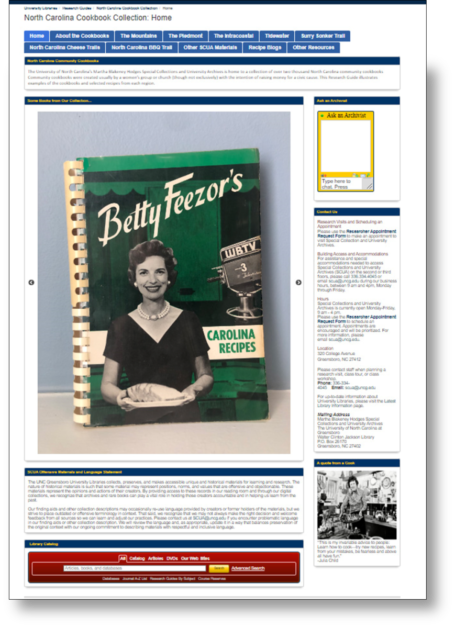
Detail of North Carolina Cookbook Collection Research Guide
The guide features a page for each North Carolina region, the Mountains, the Piedmont, the Intracoastal, and Tidewater. Along with recipes and advertisements from the books, I have included modern-day attractions each area has to offer, and recommendations of restaurants. I also have pages dedicated to the Western North Carolina Cheese Trail, the North Carolina BBQ Trail, and the Surry Sonker Trail. My intention was to weave North Carolina’s culinary history with its present.
To promote the cookbook collection, I created an information table and hosted an event featuring them. While we provided Krispy Kreme donuts and Lance Crackers (both products originated in North Carolina)
it was the featured postcards that really drew onlookers over. I selected books from each North Carolina region for certain recipes, which were then printed on one side of each postcard, and the cover of the cookbook and SCUA’s information and access to my Libguide on the other side. As they looked over the postcards, people shared memories of their grandmother’s recipe cards and cooking. As food blogs take over the post the personal cookbook used to fill, newer generations will have very different memories indeed.
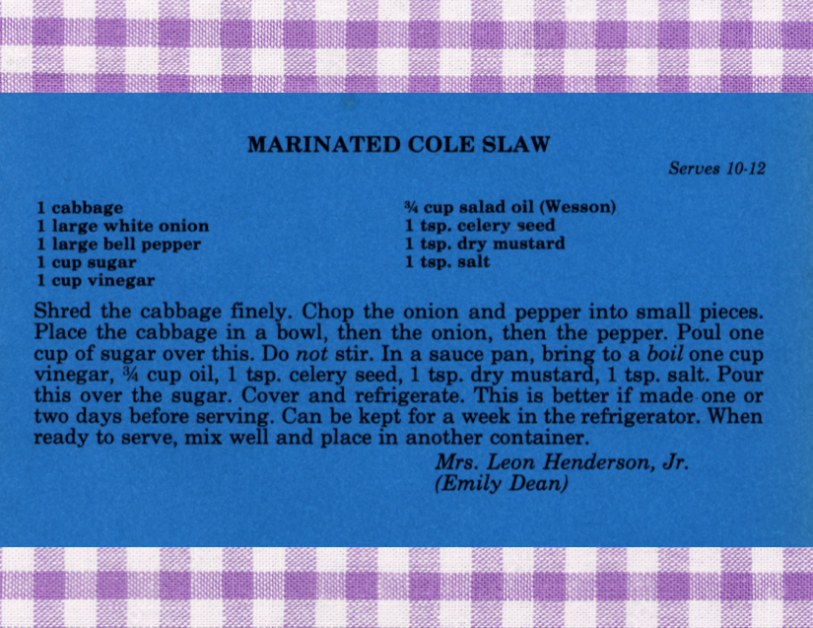
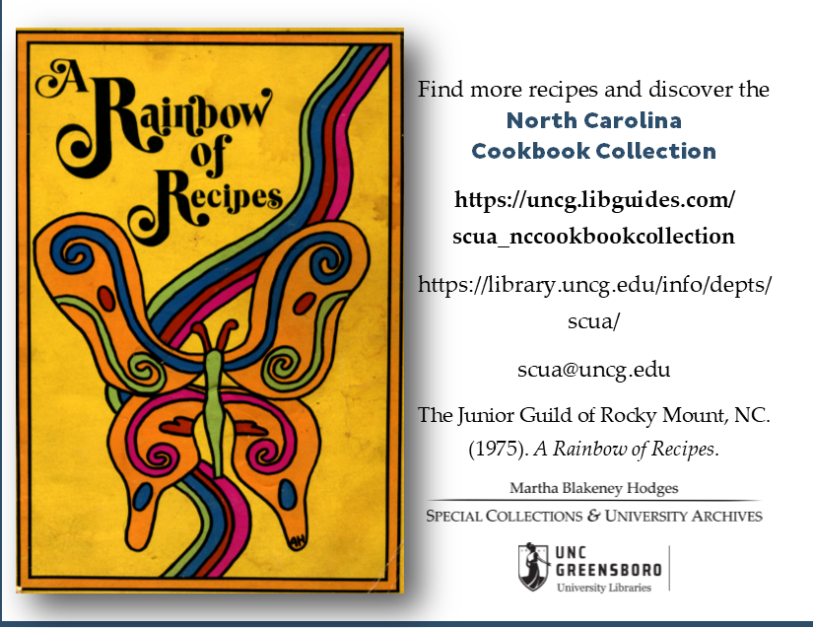
Detail of the front and back of one of the recipe cards
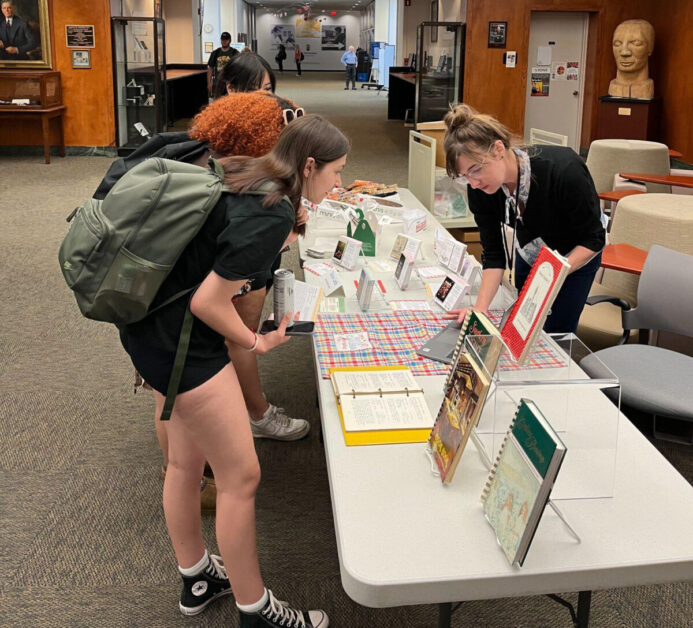
Students visiting the North Carolina Cookbook information table
In the research guide, I have represented the books currently cataloged, and I hope it will continue to evolve as others work with this collection. It has been a joy to work with this collection of cookbooks, which represent so much of North Carolina’s history, primarily that of women. It has been my privilege to work with everyone in the SCUA department. I appreciate all of their contributions to my work with these materials, and it has been fascinating to learn about their projects as well. My thanks especially to Kathelene Smith for coming up with the idea for this guide, and to Carolyn Shankle, for her guidance on the project.
Capstone Project: Artists’ Books
by Moni My Nguyen
My name is Moni My Nguyen, and I am a capstone student in UNCG’s Master’s of Library Science Program who did a project for the Special Collections and University Archives (SCUA) at UNCG. My capstone project aims to increase the discoverability and findability of artists’ books in our collection. Increasing findability means to assist a researcher who already knows what they are looking for, such as by adding subject headings in a library catalog. Discoverability means to increase the opportunities for serendipitous discovery of artists’ books, such as featuring artists’ books in an exhibition or social media post.
To increase findability, I began checking the collection and updating the department’s internal inventory. My first goal was to inspect the artists’ books in the collection to get a general idea of what the contents held and how the books were structured. In doing so, I was able to add more subject tags to the internal inventory. By adding important subject tags such as LGBTQ+, Women’s History, or BIPOC (Black, Indigenous, and People of Color), SCUA staff can more easily curate an exhibition or pull materials for a class related to a certain subject.
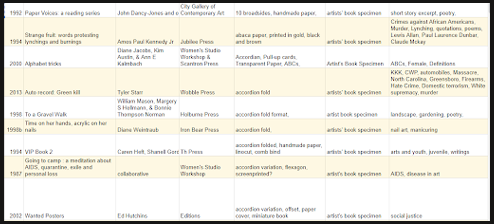
Image: Moni Nguyen
While adding books to the internal inventory, I noticed some patterns in the collection, such as how some books were cataloged. This allowed me to discover more artists’ books outside the known collection of artists’ books, which will make it easier for SCUA staff to find these books when needed.

Image: Audrey Sage
Another way I worked on findability was by updating the existing library guide. A library guide is an online resource that helps patrons and staff learn more about a specific subject by providing information on how to search and what resources may be useful. Similarly to the subject tags that I added in the internal catalog, I also added categories to the library guide for patrons. For example, I added a subheading about international book fairs and exhibitions for students and researchers who may not be in the United States. Additionally, I added a subheading of “World Languages” for patrons seeking artists’ books who do not speak English or are learning another language.

Image: Cid Roberts
I also added links for those who wish to purchase artists’ books, such as websites for publishers and artists. I included a link to a website that lists all the locations of art-o-mats in the U.S. As well as purchasing books, many of the fairs and exhibitions listed allow people to become vendors. If artists are interested in selling their books, fairs and exhibits are a great way to start.

Images: Moni Nguyen
One of my concerns with the library guide was that it would not be visually appealing enough for patrons to navigate. For this reason, I paid careful attention to the layout, included images, and incorporated hyperlinks to make searching easier for researchers. I learned quite a bit about copyright issues for artists’ books and what can or cannot be posted.
Earlier in the semester, I learned that there needed to be some diversification of the artists’ book collection. I developed a wish list of artists’ books that fit this goal and were cost-effective enough for us to purchase for the collection. I searched online in multiple languages and on different search engines that are widely used around the world to discover more artists’ books that may not have been found due to a language barrier, search engine optimization, or simply because artists’ books are not as well known as other books.
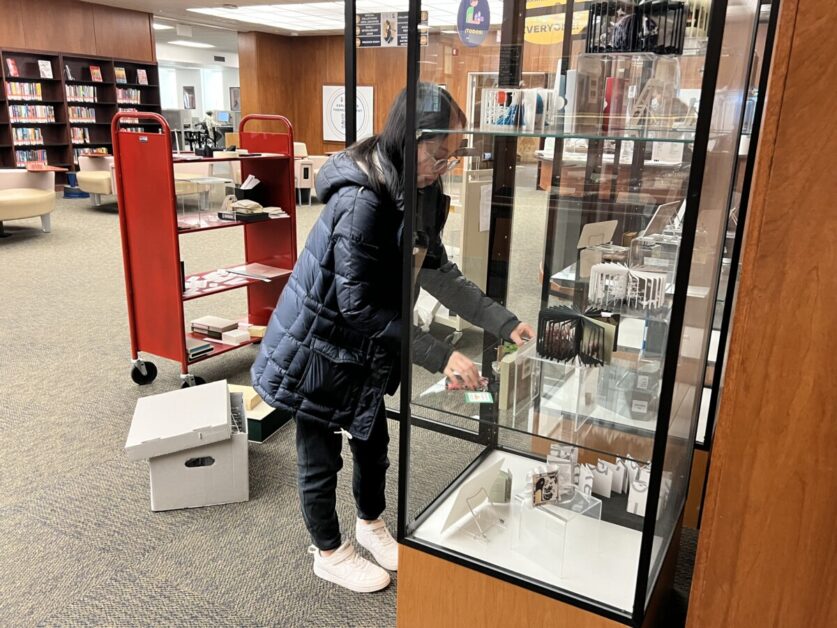
Image: Suzanne Helms
In early April, I worked on creating an exhibit of miniature artists’ books. My goal was to increase the collection’s discoverability. The exhibition of miniature artists’ books is on the first floor of the Jackson Library near the reference desk through the end of May. Due to the popularity of miniature books, I expect the exhibit will attract the attention of patrons in the library as they walk by. Additionally, the library was able to purchase some miniature Japanese artists’ books from the wish list I developed for the exhibit. These new acquisitions will be used often in instructional sessions related to the collection.
With this experience, I learned just how much time it takes to curate a collection, which was not something I expected. I learned methods for making the collection more interactive, such as creating QR codes for viewers to provide feedback. Additionally, I promoted the exhibition by creating digital advertisements for monitors in the library as well as an image and information to be posted to the library’s social media.

Image: Moni Nguyen
I hope this project will help staff and students discover and find artists’ books a little more easily than before. The internal inventory is intended to support the staff as they prepare for instructional sessions and future exhibitions. The library guide will help staff, students, or any patron that wishes to gain more information about the collection. My contributions to the wish list of additional artists’ books will expand and diversify the collection. I have learned how social media platform posts and exhibitions spread awareness and increase the discoverability of collections. In my career in the near future, my capstone experience will help me curate an exhibition, create an online resource guide, develop collections, and impact how patrons and staff can interact with a collection.